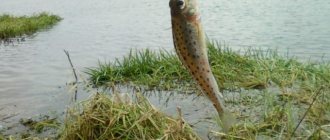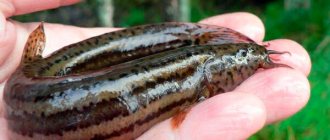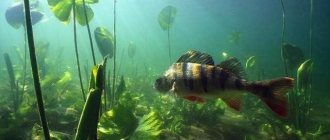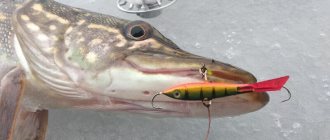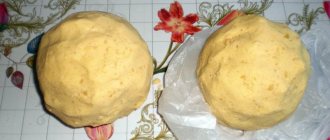What is a peled fish?
Peled is a lake and river fish that is popular to grow not only naturally, but also artificially. On average, the length of the fish reaches about 40-55 centimeters with a weight of 2-3 kilograms, sometimes the body weight can be 4-5 kilograms. The lifespan of cheese is 8-11 years.
The peled has a laterally compressed body and is silver in color. A clear distinguishing feature is a clearly visible dark gray stripe on the body. There are black dots on the head and dorsal fin. It has a terminal mouth, many gill rakers and a longer upper jaw. The peled is characterized by the presence of an adipose fin located between the dorsal and caudal fin. The body of the fish is densely covered with scales.
There are three forms of peled:
- River fast-growing . Found in floodplain rivers and lakes. Matures by the third year of life.
- Lake dwarf . The fish got its small size due to its habitat in small lakes.
- Lake common . It does not leave its habitat, it is always where it has settled.
Peled's competitors include juveniles of other whitefish, vendace and tugun. Natural enemies of fish are pike, burbot and other species of fish that eat eggs.
Where does it live and what conditions are required?
Peled is found in fresh water bodies of Eurasia, in rivers and lakes stretching from Karelia to Kolyma. Fish do not go out to sea, into salt water. Peleds spawn in lakes. Does not prefer water with fast currents. It also lives most of its time in lakes. Due to these characteristics of peled, it is bred over a large area, mainly in the northwestern part of Russia.
But some varieties of cheese live in the running water of northern rivers. Peleds prefer to stay in schools, avoiding dense underwater vegetation. If at a young age an individual is distinguished by its strength, it usually leaves the flock in the summer and settles in the depths. Very young specimens have a different habitat style: they settle in coastal waters and swim in places inhabited by vegetation. After the ice melts in the spring, river fish tend to get into floodplain lakes, where they will be able to recover, gain strength and get plenty of food.
In addition, she tries to find herself in tributaries or oxbow lakes, where a lot of food for peled accumulates by spring. As soon as the flood subsides, the peled tries to leave such reservoirs and return to the rivers.
Fishing for peled in winter - useful tips for anglers
All about fishing for peled. The fish is less demanding on the saturation of water with oxygen, therefore it often stays in bays and channels. The fish has another name - cheese. In general, this type of whitefish can be called lake. There are no subspecies, but river and lake biological forms are distinguished. Maximum sizes up to 3 kg. The species easily adapts to new bodies of water.
Settled in many places. In nature, slow-growing forms can form. Methods of catching peled. Peled have been acclimatized in many water bodies in Europe and Asia. They are bred on an industrial scale, including for recreational fishing. For fishing, both float and bottom fishing rods are used, as well as gear for fishing with artificial bait: dry flies and nymphs, including fly fishing.
Peled is excellently caught in winter using winter fishing rods. Catching peled with float and bottom fishing rods. The cheesefish is cautious and timid, so fishing for it should be done in silence. Some fans even advise wearing camouflage suits. Peled is mainly a pelargic fish; in summer, the main diet consists of invertebrates found in the water column and on the surface of the water. Fishing with a float rod is considered more successful when the bait is high from the bottom. When the water temperature drops, the fish bite well on bottom tackle. The fish manifests itself in the pond with splashes and circles on the water. Casting the tackle needs to be done far, the fish avoids the coastline. In weak currents, fish are sometimes caught using muddy water, when standing in the water, they stir up the water with their feet and toss the bait with a muddy trail.
Peled fishing winter gear. In winter, the fish is no less careful; anglers advise covering not only the holes with snow, but also the space in front of it. The fish must be fed with live, frozen or dry jig (amphip crustacean). At this moment, the fish can be understood directly under the edge of the ice. If the fish does not bite in the water column, you should definitely check the bites at the bottom.
Fly fishing for peled. To catch peled with fly fishing, traditional one-handed tackle with delicate cords and thin leaders and leashes is used. Fish are looked for by splashes on the pond. A good solution in warm waters is fishing from a raft, which increases the casting range. They are caught using both dry and sinking flies.
Lures. For fishing with natural baits, amphipods, worms, bloodworms, mollusk meat, and maggots are used. The fish takes the latter worse, but there are times when it is caught only by him. It should be noted that peled, like many whitefish, is distinguished by caution and choosiness in choosing bait. Fishing places and habitat. The natural habitat extends from the Mezen River to Kolyma. It is not found in all rivers in the region. As already mentioned, it gravitates towards spawning and life in lakes. Doesn't rise high in rivers. In acclimatized reservoirs it can form broodstocks and therefore completely takes root in reservoirs.
Peled is bred throughout Russia, in the south to Tajikistan and in Western Europe. In rivers it stays in places with weak currents. As already mentioned, fish can be detected by splashes and circles on the water while they feed on flying insects. Spawning. Matures at 5-6 years. Spawns every year, but some individuals are known to skip spawning in the Ob River. The timing of spawning may vary depending on the region and natural conditions; it begins in early autumn and can last until January. It makes spawning grounds both on rivers and in lakes.
Lures. For fishing with natural baits, amphipods, worms, bloodworms, mollusk meat, and maggots are used. The fish takes the latter worse, but there are times when it is caught only by him. It should be noted that peled, like many whitefish, is distinguished by caution and choosiness in choosing bait. Fishing places and habitat. The natural habitat extends from the Mezen River to Kolyma. It is not found in all rivers in the region. As already mentioned, it gravitates towards spawning and life in lakes. Doesn't rise high in rivers. In acclimatized reservoirs it can form broodstocks and therefore completely takes root in reservoirs.
What does a peled eat?
The main diet of the cheese is zooplankton and crustaceans. This makes catching peled much more difficult: it will rarely attack bait that is familiar to other representatives of the ichthyofauna. Peled can be caught at any time of the year. In order to find a place where fish feed, they pay attention to specific circles and splashes on the surface of the water surface.
Peled can also use maggots, worms, mosquitoes, bloodworms, mollusks, amphipods, and gammarids as food. For this reason, in the summer, fishermen use the jigless method for fishing.
How to increase your fish catch{q}
Over 7 years of active fishing, I have found dozens of ways to improve the bite. Here are the most effective ones:
- Bite activator. This pheromone additive attracts fish most strongly in cold and warm water. Discussion of the bite activator “Hungry Fish”.
- Increased gear sensitivity. Read the appropriate manuals for your specific type of gear.
- Pheromone-based lures.
To make fishing as effective as possible, you must adhere to the following recommendations:
- maintain silence in the fishing area;
- fill the space around the hole with snow at a distance of 2 m (darken the hole), you can put up a fishing tent, a house made of plywood or wood;
- use bait from live, dried or frozen mormysh (amphip crustacean).
If no bites are observed in the water column for a long time, it is worth lowering the gear to depth.
You can catch peled in winter using the most ordinary winter fishing rod equipped with high-quality monofilament fishing line with a diameter of 0.2 mm. There is no need to use expensive fishing tools, and even a beginner with minimal knowledge in this area can catch prey.
Taking into account the specifics of ice fishing for peled, where hunting is carried out at depth, it is advisable to equip the tackle with additional weight (buckshot). Such a sinker must be fixed on the equipment at a distance of 60-70 cm from the bait. During the fishing process, it is recommended to set the length of the fishing thread as follows: the bait should be at a distance of 15-30 cm from the bottom surface.
When choosing promising places, you need to remember that the object of fishing is a schooling fish and bypasses places with currents and dense grassy vegetation. It is better to catch it in the water column.

Peled is an unpretentious eater and can be attracted by baits such as:
- amphipod;
- bloodworm;
- maggot;
- worms;
- meat of various shellfish;
- dough.
For information! If you use live bait for winter fishing for schooling whitefish, then it is recommended to add small pieces of red foam rubber to it, which will increase the chances of a quality bite.
As catching baits, you can use classic versions of jigs: pellets, diamonds, pyramids, droplets. It is recommended to experiment with baits on each specific body of water to determine the most effective performance.
How to catch
Having decided on a promising location and taking measures to darken the hole, you can begin fishing. In order not to scare away the fish at the very beginning of fishing, it is recommended to place only part of the bait on the hook. A pre-specific place must be fed. This applies only to ice fishing; in summer, bait mixtures are not used to lure cheese.
It is necessary to lower the nozzle into the reservoir as quickly as possible, but it is better to take it out slowly, without rushing. This type of game is best able to attract the attention of the fish and provoke it to grab the bait.
Important! Peled are quite well attracted by moving baits.
Curd bites are characterized by assertiveness and strong sharpness, so the angler must be extremely attentive and ready to immediately make a confident hook. The fishing object, when swallowing its prey, tends to immediately go to depth. When playing, the fish exhibits strong resistance; it is advisable to catch it together.
Curd bites most often occur on the rise and with a measured action of the bait. If the fish has already tried the bait once, then you should not expect a second approach; it is recommended to replace the bait.
Winter peled fishing, if you follow all the proposed recommendations, will become not only accessible, but also quite an exciting activity even for novice fishermen. The main thing is to prepare all the necessary components of equipment and choose the right promising fishing location. And always remember to take precautions.
comments powered by HyperComments
Spawning of cheese
The spawning process of peled occurs in the autumn season, when freeze-up begins or ends, in September-December. As spawning grounds, fish choose places covered with pebbles and with a spring outlet. For normal reproduction, fish require cold water; its temperature should not exceed 8 degrees. More often, spawning occurs at temperatures closer to 0 degrees.
Peled is capable of laying more than a couple of tens of thousands of eggs, with a diameter of about 1.5 millimeters.
The hatched larvae gradually grow and are no longer considered fry when they reach 6-7 months of age. In rivers, fish mature a little slower; they mature at 3-8 years. But lake representatives mature much earlier - by 2-3 years. It all depends on the nutrition of the fish; the better it is, the faster the peled will reproduce, and spawning will take place every year or with a break of 12 months.
Is the fish opisthorchiasis?
Not everyone tends to think about what danger may await fish lovers after a river catch. Almost 90% of fish are infected with opisthorchiasis worms. Fish with helminth larvae are caught in rivers such as the Volga, Ural, Ob, Irtysh, Dnieper, and Northern Dvina.
There is a widespread belief that disease carriers are exclusively fish of the carp family. Previously it was believed that peled had nothing in common with worms. But it is not so.
Carp fish are considered the leaders in the area of infection, but at the same time, other fish species that prefer cold water can also become infected. Opisthorchiasis can take root in the body of many fish, in this case peled is no exception. Over the past few years, opisthorchiasis pathogens have been repeatedly discovered in this whitefish species. For this reason, it is especially dangerous to eat fish, because there is a risk of infection with worms.
The presence of worms in peled depends on where the peled lives. Previously, opisthorchiasis settled in mollusks and fish of the carp family. The cheese may become infected if it stays in the same water with cyprinids.
Peled is a predatory fish that eats shellfish and other fish, which is why it becomes a source of infection for others. The eggs of the worms penetrate the body of the cheese along with the eaten specimens, where maturation and further development occur.
It is easy to identify the parasite by examining the insides of a fish carcass. Worm larvae look like atypical formations in the form of whitish rice grains. Seeing this, there is no point in doubting that the cheese is infected with worms. When eating infected fish, the worms settle in the human liver and gall bladder, where they actively begin to lay eggs.
Possible harm from eating peled
Peled contains no carbohydrates, and unsaturated fatty acids, which act as antioxidants, make its meat medicinal in the fight against cancer.
Frequent consumption of dishes from this fish, exceeding the established norm, can lead to an allergic reaction, both in children and in adults prone to allergies. There is a possibility of nausea, headache and a feeling of heaviness in the stomach.
The greatest danger to human health is the risk of infection with flatworms, parasites of the fluke class. They can be transmitted to humans by eating contaminated fish. Once in the body, these parasites cause dangerous diseases that can be fatal. However, this threat comes from any fish.
It was previously assumed that peled were not susceptible to helminthiasis, but this turned out not to be the case. Dangerous parasites initially settle in mollusks and crustaceans that serve as food for peled and then infect humans from them.
Fishing Features
Fishing for peled can be challenging. In the absence of plankton, the fish will feed on bottom organisms, which is why they will not attack standard baits. The fish does not like sharp hooking, because this leads to the fact that its weak lips are torn. Sharp fishing ends with the fish going into the depths.
Fishing time
They catch fish when there is no spawning. The fish has an excellent feature - it calmly tolerates the lack of oxygen in the water, which allows it to feel better throughout the winter. In the period just before the end of winter, reservoirs are poor in food and any feeding will be attractive for peled. In such a situation, it will swim right under the ice, making it an easy prey for a fisherman.

Tackle
Peled is a shy fish, and it is better to catch it in complete silence. It is permissible to go fishing at any time of the year, except for spawning. A splash in the water and special circles will help you find its habitat. For winter fishing, it is recommended to use a regular fishing rod, and in the summer, a float fishing rod without a sinker is considered effective.
To catch peled, it is better to use a fishing line with a thickness of 0.2-0.22 mm. You need to choose a hook number 4 or 5. The fish bite resembles a sharp jerk. If you come across a large specimen, it will be difficult to fish it out.
To catch peled on the Volga, it is advisable to have a catch with you - a simple meter-long rod. A fishing line 2.5-4 meters long is tied to it. During the fishing process, several selections are used. The beginning of fishing begins with the fisherman going to the depths and trying to make the water muddy, because peled are especially attracted to muddy water. She strives for a cloudy cloud, hoping for good prey. She will notice the bait and grab it. It is necessary to hook very carefully, but at the same time sharply, although this may result in loss of the catch.
A large peled is capable of dragging a fishing line for a long time, until the fisherman makes every effort to pull the fish out. Experienced fishermen place the tackle on the bottom, at their feet, holding the upper part. The current will gradually carry the bait down, which is why it sometimes needs to be pulled back. After 10-15 minutes of this type of fishing, they go up a couple of steps upstream and repeat the technique.
Bait
In summer, fishermen use an ordinary earthworm, clam or bloodworm as bait. It is acceptable to try to catch a peled using maggots, but this bait, unlike the previous options, is less effective. The hook is held approximately in the middle of the water column. The favorite depth of peled is considered to be a distance from the bottom of about 70-150 centimeters.
In winter, do not use live bait. In such a situation, it is best to use a jig.
You can increase your chances of catching peled in another way: use a special, shaded hole. This is done quite simply. Rollers are made of snow around the hole so that their shadow completely obscures the water of the hole. The height of such a roller should be about 1 meter. The bait is kept no deeper than 5-6 centimeters from the bottom edge of the ice. If the fish does not bite, it is recommended to catch it at medium depths and near the ice.
general information
Fishing for peled
You can catch peled throughout the year. It is believed that the larger the body of water in which fishing will take place, the larger the peled found in it. In winter, a regular fishing rod is used as a fishing rod. As bait - jig. At the same time, for ice fishing it is necessary to darken the hole by densely covering it with snow.
Towards the end of winter, fishermen use dried or frozen bloodworms as bait. For tasty food, the peled rises to the upper layers of water, where it actively bites. In order to catch a peled, it is necessary not to lower the jig deeply, but to drive it at a distance of no more than 10 centimeters from the bottom wall of the ice. If you can’t get a bite, you need to fish the middle and then the lower layers of water.
In the summer, as well as in spring and autumn, anglers catch peled using a float rod. In this case, the bait is thrown to a depth of at least 1 meter from the bottom, since peled lives at a depth of 0.8 to 1.5 meters from the bottom. Attachments for catching peled on a float rod can be: maggot; bloodworm; earthworms and dungworms; mosquitoes; shellfish; amphipods.
Peled is considered a shy fish. Therefore, the fisherman needs camouflage and the absence of loud sounds when fishing. Camouflage lies in the color of the fisherman's clothing. It should not be in bright colors, it should match the color and blend in with the environment.
Is it possible to breed and grow fish?
It is possible to increase the profitability of a fish farming business by breeding peled together with carp. In addition to increasing the productivity of the reservoir, this method contributes to the excellent prevention of helminthiasis in other fish, because peled are prone to eating copepods, which are an important intermediate link in the development cycle of parasites.
Breeding and growing fish occurs in stages:
- The first stage consists of pre-prepared broodstock from which the eggs are obtained. To do this, the best females and males are selected, released into small ponds, from where they are later caught. In November, the fish are placed in separate flowing ponds indoors for the purpose of ripening. The volume of the ponds must be at least 70 cubic meters and have an elongated shape. In order for the fish to feel comfortable in them, the water is updated regularly - every 8 hours. It is permissible to admit no more than 1,500 breeding individuals into one pond.
- The second stage is that ready-made breeders are sent in groups of 250 individuals to small pools, where the caviar is selected. Usually males are “used” several times with breaks of 2-3 days. Fertilized eggs are sent to an incubator - this will provide the embryos with an optimal level of oxygen saturation. Depending on the temperature, the incubation period lasts 123-145 days. At this time, it is necessary to carry out preventive washing of the caviar using special solutions. After the larvae emerge, they are sent to cages. After a week they are ready to actively feed.
- The third stage begins with the release of the fry into the fingerling pond, where they grow together with the carp. Planting density is carried out at the rate of 20-25 thousand larvae per 1 hectare. It is optimal if the depth of the pond is no more than 3 meters and the area is 15-20 hectares. In this case, the amount of silt at the bottom of the reservoir does not matter, because the peled leaves it along with the drained water. Ponds with young animals do not require filtration for two months. Only when fish reach this age is it necessary to create flow in the reservoir.
Although peled can feel normal in warm water, it is still better to keep it in a body of water where the water temperature does not exceed 22 degrees. The cheese is caught when the mark drops to 5 degrees or below.
Today, the survival rate of peled is about 50%, due to which about 2 centners of fish are obtained from 1 hectare with an average weight of fingerlings of about 20-25 grams.
Fingerlings of peled often overwinter in wintering quarters of carp fish, and the oxygen content should be at least 5 mg/l. The planting rate for peled fingerlings per 1 hectare is up to 120 thousand. In recent years, fish farmers have been building wintering complexes for peled fingerlings, which are “greenhouse” pools that are buried 2 meters into the ground.
Regarding the period of catching fish for further sale, it is difficult to answer unambiguously. In the natural environment, the weight of a three-year-old peled is 200-350 grams, a four-year-old fish is 300-600 grams, and a five-year-old fish is 500-700 grams. Selling fish at two years of age will be more profitable.
Survival and fish productivity
In the first summer of life in ponds, the survival rate of peled is 80% of the number of planted larvae, in the second year 80-90% in rivers, 60% in lakes of the number of planted fingerlings. When the peled reaches three years of age, its growth slows down, which is why it is caught from lakes. Unlike other whitefish, peled is undemanding to the level of oxygen in water, due to which it can withstand water temperatures of about 0 degrees.

The fertility of a two-year-old cheese grown in a pond weighing 350 grams is 15 thousand eggs, and weighing 500 grams is 200 thousand eggs per one female peled.
The productivity of fish in shallow lakes when grown together with carp is about 100-120 kilograms per 1 hectare, in ponds - up to 250 kilograms per 1 hectare. It is recommended to grow peled in large ponds, where the total area reaches at least 100 hectares.
Fish farming and fish farming
All about life in water
- Mark forums as read
- Notes
agree))) . I didn’t write about the nets, I voiced the stubs.. I wouldn’t envy anyone who digs at it with nets.. Small and delicate.. but a tasty infection..
Catching peled using float and bottom fishing rods
The cheesefish is cautious and timid, so fishing for it should be done in silence. Some fans even advise wearing camouflage suits. Peled is mainly a pelargic fish; in summer, the main diet consists of invertebrates found in the water column and on the surface of the water. Fishing with a float rod is considered more successful when the bait is high from the bottom. When the water temperature drops, the fish bite well on bottom tackle. The fish manifests itself in the pond with splashes and circles on the water. Casting the tackle needs to be done far, the fish avoids the coastline. In weak currents, fish are sometimes caught “with muddy water”, when standing in the water, they stir up the water with their feet and toss the bait with a muddy trail.
During winter fishing for peled closer to spring, a handful of frozen amphipods (mormysh) and then a couple of handfuls of dried amphipods are poured into the holes as complementary food. At this time, the peled will approach almost the very surface and grab the bait with its mouth. During this period, its most active biting occurs. Around the hole you need to cover the ice with snow 1-2 meters deep. The bait usually drops into the hole no lower than 5-6 cm, from the lower ice level. But there are periods when peled begins to take well from the bottom. If the fish does not bite in the upper layers of water, you should definitely fish both the middle and lower water levels.
The benefits and harms of fish
Consumption of peled as food has a beneficial effect on the human body. It contains many micro- and macroelements that promote cell restoration and normalize the functioning of the nervous system. Peled meat is rich in chromium, which is necessary to maintain optimal blood sugar levels.
By regularly including fish in your diet, you will be able to normalize sleep and get rid of depression and irritability. Fish helps eliminate constipation and bad breath. Fish meat contains substances that help make the skin firm and elastic.
By consuming fish several times a week, your concentration will improve and chronic fatigue will disappear. Also, cheese is a product that has a beneficial effect on the digestive system, eliminates cramps and pain in the stomach. Peled is rich in potassium, which normalizes the functioning of the heart muscle, and the presence of phosphorus optimizes the functioning of the reproductive system, especially in women.
Peled is an excellent preventative against atherosclerosis and helps reduce cholesterol levels. The calorie content of 100 grams of peled meat is only 126 calories; fish is included in the diet when following a diet.
Despite many beneficial properties, fish should not be consumed in certain cases:
- Peled that has not passed sanitary control or was caught in polluted waters may be infected with opisthorchiasis worms.
- With frequent consumption, more than 4 times a week, an allergic reaction may develop, which will provoke rashes on the body, cause heaviness in the stomach, and sometimes nausea.
- Fish is not suitable for consumption by children under 1 year of age.
But this does not mean that fish is generally prohibited from being consumed. In any case, you need to be careful and monitor your well-being.
The peled fish is considered a valuable commercial species. Fishing for “fun” fish becomes interesting and exciting, because hunting for individuals of the whitefish family is not as easy as it seems at first glance. But catching a large specimen is a real success for the fisherman.
0
0
Copy link
5+5 clever life hacks and useful tips for fishing: secrets of experienced people for a successful catch
There are several instructive and incredibly useful tips (in fashion now lifekahs) for summer and winter fishing.
The secrets of experienced fishermen to make your holiday on the river enjoyable - to take your mind off the bustle of the city and “catch a pack” of adrenaline and excitement when fishing for a large trophy.
And for beginners - learning and acquiring the skills of a successful catch from the first fishing trip.
There are several instructive and incredibly useful tips (in fashion now lifekahs) for summer and winter fishing.
Distribution and habitats of peled
Peled inhabits lakes and rivers in northern Eurasia - from Mezen in the west to Kolyma in the east. It does not go out to sea, only occasionally being caught in the slightly salty water of Kara Bay. If the omul is an anadromous whitefish, and the tugun is mainly river, then the peled can be called lake.

Stays in the water column. Peled avoids places with abundant aquatic vegetation. In lakes and reservoirs, mature fish prefer to stay scattered in deep places in the summer. Juveniles can often be found in coastal zones with poorly developed vegetation. River peled, after opening the river to feed, enters floodplain lakes, rises into tributaries over short distances, and is found in feeding channels and oxbow lakes, sticking to open areas in them. The duration of feeding is determined by the level and time of standing water. As the water level drops, peled leave their feeding ponds and return to the river.
Peled sizes are up to 40-58 cm (usually 32-36 cm), weight up to 2.5-3 kg, less often 4-5 kg. Peled of the Argazin reservoir - up to 20-30 cm, weight up to 300 g. The lifespan of peled does not exceed 11-12 years.
Tricks for attaching tench
Fishermen consider tench to be an exceptional gourmet. So it can sometimes be very difficult to guess his taste preferences. But with the help of attachment, you can accustom the tench to a certain food culture. It is better if the menu is simultaneously combined with the wishes of the fisherman.
A variety of feed mixtures are used to attach tench. Some of them are based on natural animal foods, while others include a large number of plant components.
And if neighbors such as crucian carp, carp, carp or bream live nearby, then it is almost impossible to overfeed the fish. It is also necessary to take into account local traditions of luring tench, so as not to alert it to an unknown taste and smell.
There are several popular recipes for Privada. They can be successfully used in different bodies of water.
- The easiest way to collect fish in a particular area is to dig up worms and place them in a container with a piece of turf. After some time, all the worms will crawl into the turf; all that remains is to throw the bait into the prepared place. Accordingly, it is better to use worms as bait.
- It is easy to bait tench with steamed peas or boiled barley. It is recommended to mix these components, then during the fishing process you can select the optimal bait for picky fish.
The tench should be baited for 3-4 days , after which you can take a fasting day and go fishing.
As soon as the necessary water area has been prepared, it is necessary to start attaching.
From the experience of fishing in the shallows
Which angler fishes on coastal shallows where the depth does not exceed 1 m? Beginners and inexperienced! It is unlikely that I will be mistaken if I answer this way. After all, the vast majority of more or less experienced fishermen prefer to look for fishing success in the depths. It is difficult, of course, to dispute the well-known truth: “The fish looks for where it is deeper. " , the justice of which many of us have repeatedly been convinced of in practice. However, practice also shows that on the coastal shallows you can successfully catch not only small fish, but also quite decent fish. Sometimes it is simply difficult for us psychologically to overcome habits and beliefs that are ingrained in our minds. Shallows play a very significant role in the life of underwater inhabitants, and at certain times they are visited by a lot of all kinds of fish, both peaceful and predatory. It is also important that each season has its own characteristics of life on the shallows and the behavior of underwater inhabitants on them, which should be taken into account when fishing. Over the course of a number of years, when fishing in the shallows, I have often observed quite interesting cases, which I tried to generalize and test in practice. Gradually, the skills of such fishing both in open water and from ice were formed. And with them, as well as with some cases from my practice, which, it seems to me, break our ideas about shallows as unpromising places for fishing, I want to share with anglers.
And here I would like to say a few words about fisherman’s ethics. More than once I had to witness how less fortunate ones came running to a successful fisherman and literally “drilled” him in the winter, and in the summer they threw their gear directly to the floats of his fishing rods. The result of such actions is known - the cessation of biting and the spoiled mood of the “lucky one”. Of course, a real fisherman would not allow this to happen, but, unfortunately, such cases happen often.





